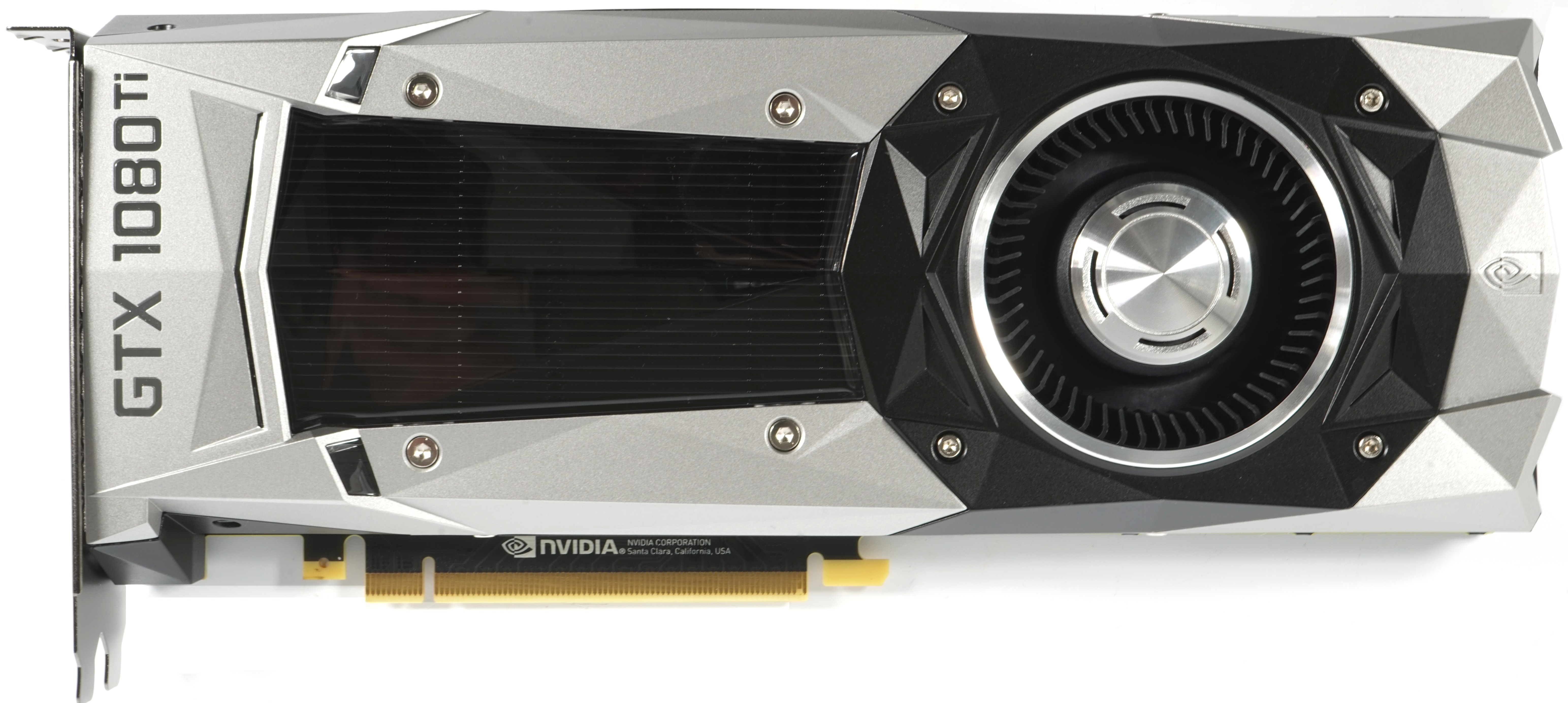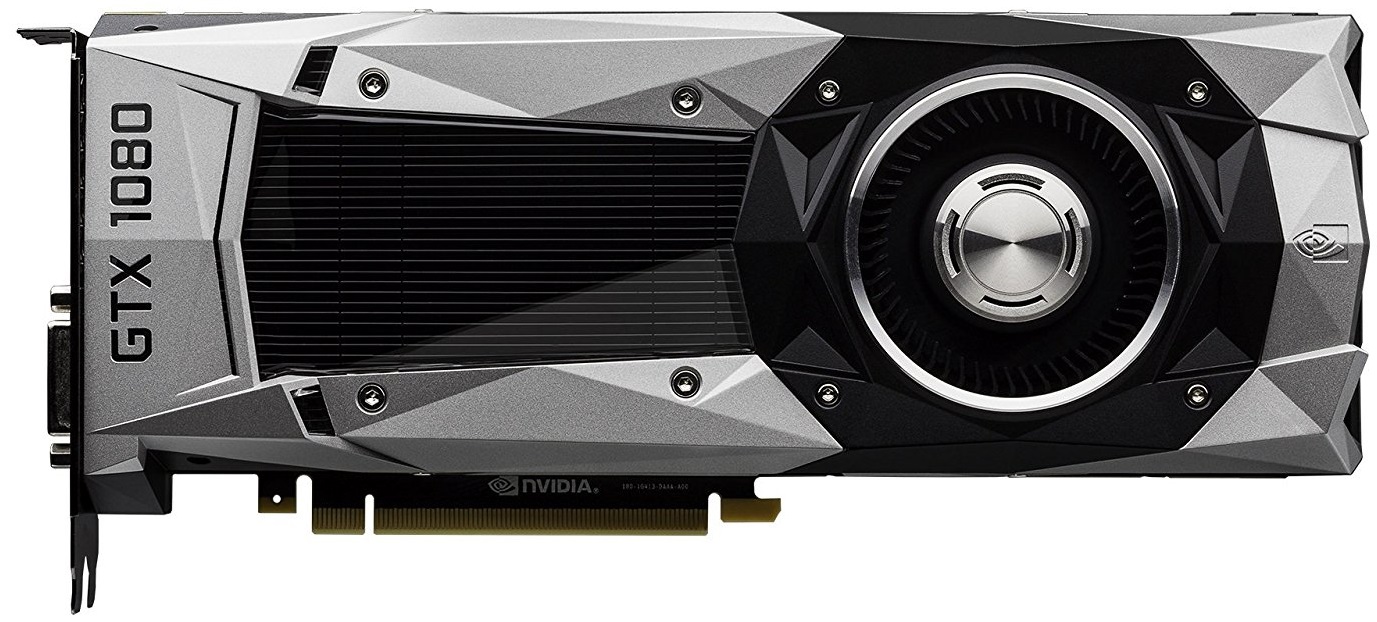Nvidia GeForce GTX 1070 Ti 8GB Review: Vega In The Crosshairs
Why you can trust Tom's Hardware
How We Tested GeForce GTX 1070 Ti
Nvidia’s latest and greatest will no doubt be found in high-end platforms. Some of these may include Broadwell-E-based systems. However, our U.S. lab is sticking with its MSI Z270 Gaming Pro Carbon motherboard, which was recently upgraded to host a Core i7-7700K CPU, for performance measurements. The new processor is complemented by G.Skill’s F4-3200C14Q-32GTZ memory kit. Intel’s Kaby Lake architecture remains one of the company’s most effective per clock cycle, and a stock 4.2 GHz frequency is higher than the models with more cores. Crucial’s MX200 SSD remains, as does the Corsair H110i cooler and be quiet! Dark Power Pro 10 850W power supply.
As far as competition goes, the GeForce GTX 1070 Ti is rivaled most closely by Radeon RX Vega 56. Of course, we imagine that gamers also want to know how 1070 Ti fares against the faster/pricier GeForce GTX 1080 and 1080 Ti, so we include them in our benchmark results. Similarly, we add GeForce GTX 1070 to bookend the Pascal architecture-based hardware. AMD’s Radeon RX Vega 64 is the other relevant entry in this class; it’s present and accounted for, too.
The 1070 Ti card used for our game testing is MSI’s GeForce GTX 1070 Ti Titanium 8G. Its performance should be representative of Nvidia’s Founders Edition board or any other partner card, since they all operate at similar frequencies.
Comparison Products
Leading up to today's review, we completely revamped the software side of our platform. Installing the Windows 10 Creators Update caused all sorts of problems with PresentMon, OCAT, and our own custom front-end, but we thought it important to get our operating systems current. As such, we used a combination of OCAT 1.1.0 and PMG 0.9.21 to collect data, along with a fresh build of our log file interpreter to get that information into Excel. All of the Nvidia cards were benchmarked using driver versions 388.00 and 388.09, while AMD's cards were tested with Crimson ReLive Edition 17.10.3.
Our conventional gaming selection now includes Ashes of the Singularity: Escalation, Battlefield 1, Destiny 2, Doom, Metro: Last Light Redux, Middle-earth: Shadow of War, Rise of the Tomb Raider, Tom Clancy’s The Division, Tom Clancy’s Ghost Recon Wildlands, The Witcher 3, and Warhammer 40,000: Dawn of War III.
The test methodology we use for the other games in our suite comes from PresentMon: Performance In DirectX, OpenGL, And Vulkan. In short, all of these games are evaluated using a combination of OCAT and our own in-house GUI for PresentMon, with logging via AIDA64. If you want to know more about our charts (particularly the unevenness index), we recommend reading that story.
Test Systems
We introduced our new test system and methodology in How We Test Graphics Cards. If you'd like more detail about our general approach, check that piece out.
Get Tom's Hardware's best news and in-depth reviews, straight to your inbox.
In this case, only the CPU, RAM, motherboard, and cooling system are different.
| Test System and Configuration | |
|---|---|
| Hardware | Germany Intel Core i7-6900K @ 4.3 GHzMSI X99S XPower Gaming TitaniumCorsair Vengeance DDR3-32001x 1TB Toshiba OCZ RD400 (M.2, System)2x 960GB Toshiba OCZ TR150 (Storage, Images)be quiet! Dark Power Pro 11, 850W Power SupplyWindows 10 Pro (Creators Update)U.S.Intel Core i7-7700KMSI Z270 Gaming Pro CarbonG.Skill F4-3200C14Q-32GTZ1x 500GB Crucial MX200be quiet! Dark Power Pro 11, 850W Power SupplyWindows 10 Pro (Creators Update) |
| Cooling | GermanyAlphacool Eiszeit 2000 ChillerAlphacool Eisblock XPXThermal Grizzly Kryonaut (For Cooler Switch) |
| Monitor | Eizo EV3237-BK |
| PC Case | Lian Li PC-T70 with Extension Kit and Mods Configurations: Open Benchtable, Closed Case |
| Power Consumption Measurement | Contact-free DC Measurement at PCIe Slot (Using a Riser Card) Contact-free DC Measurement at External Auxiliary Power Supply Cable Direct Voltage Measurement at Power Supply 2x Rohde & Schwarz HMO 3054, 500MHz Digital Multi-Channel Oscilloscope with Storage Function4x Rohde & Schwarz HZO50 Current Probe (1mA - 30A, 100kHz, DC) 4x Rohde & Schwarz HZ355 (10:1 Probes, 500MHz) 1x Rohde & Schwarz HMC 8012 Digital Multimeter with Storage Function |
| Thermal Measurement | 1x Optris PI640 80Hz Infrared Camera + PI Connect Real-Time Infrared Monitoring and Recording |
| Acoustic Measurement | NTI Audio M2211 (with Calibration File, Low Cut at 50Hz) Steinberg UR12 (with Phantom Power for Microphones)Creative X7, Smaart v.7 Custom-Made Proprietary Measurement Chamber, 3.5 x 1.8 x 2.2m (L x D x H) Perpendicular to Center of Noise Source(s), Measurement Distance of 50cm Noise Level in dB(A) (Slow), Real-time Frequency Analyzer (RTA) Graphical Frequency Spectrum of Noise |
MORE: Best Graphics Cards
MORE: Desktop GPU Performance Hierarchy Table
MORE: All Graphics Content
Current page: How We Tested GeForce GTX 1070 Ti
Prev Page A Closer Look At MSI's GeForce GTX 1070 Ti Titanium 8G Next Page Ashes of the Singularity: Escalation (DirectX 12)-
10tacle Yaaayyy! The NDA prison has freed everyone to release their reviews! Outstanding review, Chris. This card landed exactly where it was expected to, between the 1070 and 1080. In some games it gets real close to the 1080, where in other games, the 1080 is significantly ahead. Same with comparison to the RX 56 - close in some, not so close in others. Ashes and Destiny 2 clearly favor AMD's Vega GPUs. Can we get Project Cars 2 in the mix soon?Reply
It's a shame the overclocking results were too inconsistent to report, but I guess that will have to wait for vendor versions to test. Also, a hat tip for using 1440p where this GPU is targeted. Now the question is what will the real world selling prices be vs. the 1080. There are $520 1080s available out there (https://www.newegg.com/Product/Product.aspx?Item=N82E16814127945), so if AIB partners get closer to the $500 pricing threshold, that will be way too close to the 1080 in pricing. -
samer.forums Vega Still wins , If you take in consideration $200 Cheaper Freesync 1440p wide/nonwide monitors , AMD is still a winner.Reply -
SinxarKnights So why did MSI call it the GTX 1070 Ti Titanium? Do they not know what Ti means?Reply
ed: Lol at least one other person doesn't know what Ti means either : If you don't know Ti stands for "titanium" effectively they named the card GTX 1070 Titanium Titanium. -
10tacle Reply20334482 said:Vega Still wins , If you take in consideration $200 Cheaper Freesync 1440p wide/nonwide monitors , AMD is still a winner.
Well that is true and always goes without saying. You pay more for G-sync than Freesync which needs to be taken into consideration when deciding on GPUs. However, if you already own a 1440p 60Hz monitor, the choice becomes not so easy to make, especially considering how hard it is to find Vegas. -
10tacle For those interested, Guru3D overclocked their Founder's Edition sample successfully. As expected, it gains 9-10% which puts it square into reference 1080 territory. Excellent for the lame blower cooler. The AIB vendor dual-triple fan cards will exceed that overclocking capability.Reply
http://www.guru3d.com/articles_pages/nvidia_geforce_gtx_1070_ti_review,42.html -
mapesdhs Chris, what is it that pummels the minimums for the 1080 Ti and Vega 64 in BF1 at 1440p? And why, when moving up to UHD, does this effect persist for the 1080 Ti but not for Vega 64?Reply
Also, wrt the testing of Division, and comparing to your 1080 Ti review back in March, I notice the results for the 1070 are identical at 1440p (58.7), but completely different at UHD (42.7 in March, 32.7 now); what has changed? This new test states it's using Medium detail at UHD, so was the March testing using Ultra or something? The other cards are affected in the same way.
Not sure if it's significant, but I also see 1080 and 1080 Ti performance at 1440p being a bit better back in March.
Re pricing, Scan here in the UK has the Vega 56 a bit cheaper than a reference 1070 Ti, but not by much. One thing which is kinda nuts though, the AIB versions of the 1070 Ti are using the same branding names as they do for what are normally overclocked models, eg. SC for EVGA, AMP for Zotac, etc., but of course they're all 1607MHz base. Maybe they'll vary in steady state for boost clocks, but it kinda wrecks the purpose of their marketing names. :D
Ian.
PS. When I follow the Forums link, the UK site looks different, then reverts to its more usual layout when one logs in (weird). Also, the UK site is failing to retain the login credentials from the US transfer as it used to.
-
mapesdhs Reply20334510 said:Well that is true and always goes without saying. You pay more for G-sync than Freesync which needs to be taken into consideration when deciding on GPUs. ...
It's a bit odd that people are citing the monitor cost advantage of Freesync, while article reviews are not showing games actually running at frame rates which would be relevant to that technology. Or are all these Freesync buyers just using 1080p? Or much lower detail levels? I'd rather stick to 60Hz and higher quality visuals.
Ian.
-
FormatC @Ian:Reply
The typical Freesync-Buddy is playing in Wireframe-Mode at 720p ;)
All this sync options can help to smoothen the output, if you are too sensitive. This is a fact, but not for everybody with the same prio. -
TJ Hooker Reply
From other benchmarks I've seen, DX12 performance in BF1 is poor. Average FPS is a bit lower than in DX11, and minimum FPS far worse in some cases. If you're looking for BF1 performance info, I'd recommend looking for benchmarks on other sites that test in DX11.20334648 said:Chris, what is it that pummels the minimums for the 1080 Ti and Vega 64 in BF1 at 1440p? And why, when moving up to UHD, does this effect persist for the 1080 Ti but not for Vega 64? -
10tacle Reply20334667 said:It's a bit odd that people are citing the monitor cost advantage of Freesync, while article reviews are not showing games actually running at frame rates which would be relevant to that technology. Or are all these Freesync buyers just using 1080p? Or much lower detail levels? I'd rather stick to 60Hz and higher quality visuals.
Well I'm not sure I understand your point. The benchmarks show FPS exceeding 60FPS, meaning maximum GPU performance. It's about matching monitor refresh rate (Hz) to FPS for smooth gameplay, not just raw FPS. But regarding the Freesync argument, that's usually what is brought up in price comparisons between AMD and Nvidia. If someone is looking to upgrade from both a 60Hz monitor and a GPU, then it's a valid point.
However, as I stated, if someone already has a 60Hz 2560x1440 or one of those ultrawide monitors, then the argument for Vega gets much weaker. Especially considering their limited availability. As I posted in a link above, you can buy a nice dual fan MSI GTX 1080 for $520 on NewEgg right now. I have not seen a dual fan MSI Vega for sale anywhere (every Vega for sale I've seen is the reference blower design).




